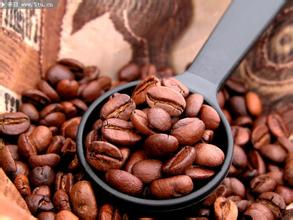Introduction to the flavor of Kenyan coffee with bright, mild and citric acid flavor
Kenyan coffee has always been a very representative category of African coffee varieties. Basically, every coffee lover has his own favorite African coffee or two, and Kenyan varieties must have a place in it. The best Kenyan flavors are hybrid and have quite obvious fruit flavors (such as strawberries and citrus) and sometimes lead to the idea that they have spicy flavors. Some Kenyan coffee tastes reminiscent of cleanliness and brightness, while others are reminiscent of some precious wine-making spices.
Kenyan coffee looks soft and light, with a kind of elegant feeling. Compared with Ethiopian beans, Kenyan coffee still has the elegant sour of African beans, but less lively and gentle like Yega Xuefei. And some more rich and thick, thick but not low, not as fierce as Mantenin, but with a strong taste of bright sunshine.
Under the general trend that the technology of washing coffee is increasing day by day, it has become more and more difficult to keep the pure tanning process with high technical difficulty.
Taste evaluation:
Dry aroma: strong citrus fruit, mango and grape aromas
Acid: bright and mild, citric acid fragrance.
The palate has obvious aromas of rum, bayberry or BlackBerry fruit, plus tangerine peel or grape finish.
Body: pure, unlike ordinary African coffee, the whole is clean, bright, warm sunshine and summer breeze. The sweetness of this bean is very introverted, like the sweetness of dried fruit but not flamboyant.

Important Notice :
前街咖啡 FrontStreet Coffee has moved to new addredd:
FrontStreet Coffee Address: 315,Donghua East Road,GuangZhou
Tel:020 38364473
- Prev

Coffee beans from Bali, Indonesia introduce the processing methods of fine coffee
The coffee comes from the excrement of an animal called the civet (commonly known as the civet in Indonesia). Although it comes from smelly poop, it is full of sweetness and a burst of indescribable sweetness. This wild musk cat likes to eat fat, pulpy coffee fruit, but the hard hard nut (raw bean) cannot be digested. It is excreted with feces and becomes Kop after cleaning.
- Next

Eight major coffee producing areas in Guatemala introduce the treatment methods of fine coffee.
Eight major coffee producing areas in Guatemala. Acatenango Valley: the Acatenango Valley is 2000 meters (6500 feet) above sea level, with dense shade and unique ecology. Nearby Fuego volcanoes continue to erupt, making its coarse, sandy soil rich in a variety of minerals. Temperate sea breezes from the Pacific and seasons
Related
- Does Rose Summer choose Blue, Green or Red? Detailed explanation of Rose Summer Coffee plots and Classification in Panamanian Jade Manor
- What is the difference between the origin, producing area, processing plant, cooperative and manor of coffee beans?
- How fine does the espresso powder fit? how to grind the espresso?
- Sca coffee roasting degree color card coffee roasting degree 8 roasting color values what do you mean?
- The practice of lattes: how to make lattes at home
- Introduction to Indonesian Fine Coffee beans-- Java Coffee producing area of Indonesian Arabica Coffee
- How much will the flavor of light and medium roasted rose summer be expressed? What baking level is rose summer suitable for?
- Introduction to the characteristics of washing, sun-drying or wet-planing coffee commonly used in Mantenin, Indonesia
- Price characteristics of Arabica Coffee Bean Starbucks introduction to Manning Coffee Bean Taste producing area Variety Manor
- What is the authentic Yega flavor? What are the flavor characteristics of the really excellent Yejasuffi coffee beans?

